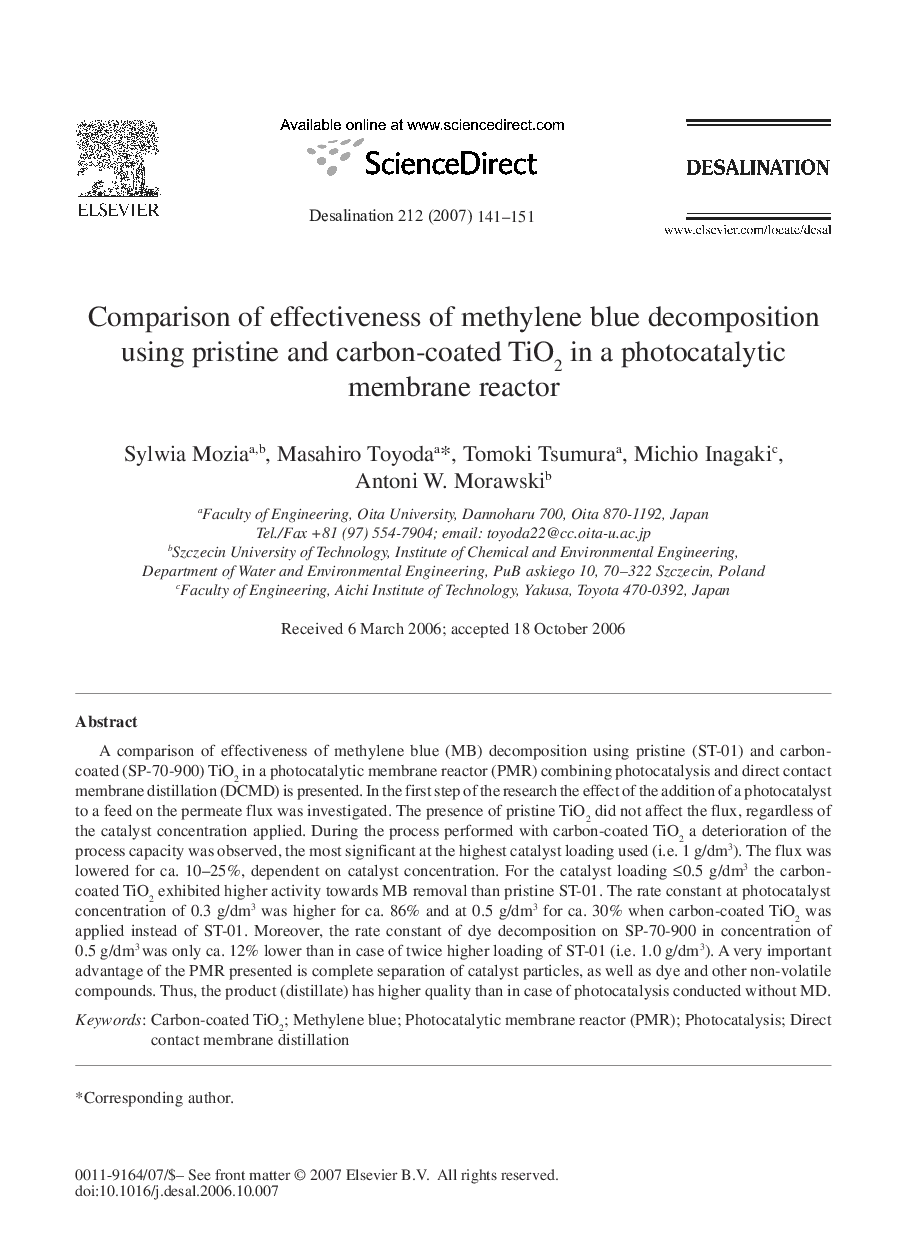| Article ID | Journal | Published Year | Pages | File Type |
|---|---|---|---|---|
| 627925 | Desalination | 2007 | 11 Pages |
A comparison of effectiveness of methylene blue (MB) decomposition using pristine (ST-01) and carboncoated (SP-70-900) TiO2 in a photocatalytic membrane reactor (PMR) combining photocatalysis and direct contact membrane distillation (DCMD) is presented. In the first step of the research the effect of the addition of a photocatalyst to a feed on the permeate flux was investigated. The presence of pristine TiO2 did not affect the flux, regardless of the catalyst concentration applied. During the process performed with carbon-coated TiO2 a deterioration of the process capacity was observed, the most significant at the highest catalyst loading used (i.e. 1 g/dm3). The flux was lowered for ca. 10–25%, dependent on catalyst concentration. For the catalyst loading ≤0.5 g/dm3 the carboncoated TiO2 exhibited higher activity towards MB removal than pristine ST-01. The rate constant at photocatalyst concentration of 0.3 g/dm3 was higher for ca. 86% and at 0.5 g/dm3 for ca. 30% when carbon-coated TiO2 was applied instead of ST-01. Moreover, the rate constant of dye decomposition on SP-70-900 in concentration of 0.5 g/dm3 was only ca. 12% lower than in case of twice higher loading of ST-01 (i.e. 1.0 g/dm3). A very important advantage of the PMR presented is complete separation of catalyst particles, as well as dye and other non-volatile compounds. Thus, the product (distillate) has higher quality than in case of photocatalysis conducted without MD.
